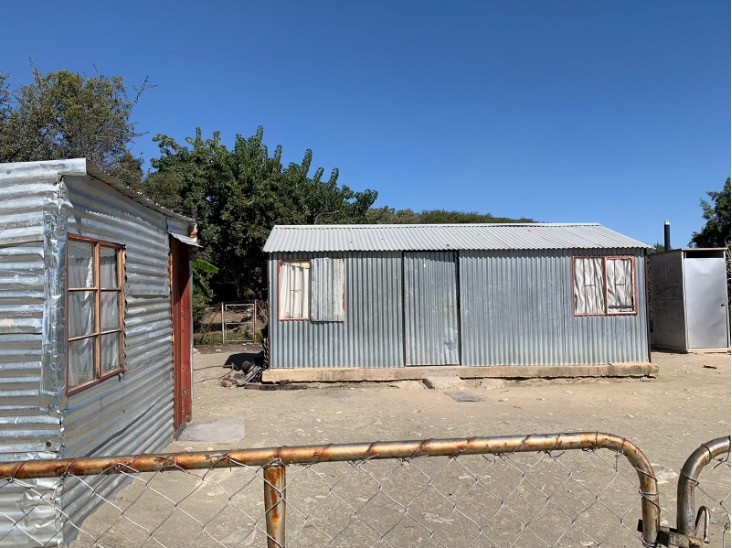
20 January 2023
A house in Mmadithlokwa built by Tharisa mine for a family who were relocated due to the mine’s expansion. Photo: Danjelle Midgley
When residents of Mmadithlokwa, near Marikana in North West province, have mobile data, they record their experiences of mine blasting explosions from the nearby Tharisa mine on WhatsApp groups.
A sample of the messages posted by residents, members of the Mine Host Communities in Crisis Network (MHCCN) and other community organisations, reveals the distress caused by the noise and dust of the explosions.
Here’s an example of the kind of messages posted to such groups over a two-month period:
A blasting notice provided to community members by the mine on the day of the blast. Sometimes the community is informed about the mine’s blasting operations through notices. Sometimes the only warning is the loud siren immediately before the blast, warning that certain families must evacuate their homes. Sometimes there is no warning. Photo: Christinah Mdau
Mines use explosives to blast apart solid rock or ore into smaller fragments for processing. Mine blasting causes ground and air vibration shockwaves. These shockwaves have significant impacts on neighbouring communities, both physical and psychological.
These impacts are not only seen in Mmadithlokwa but also in the hundreds of other places in South Africa where mines use blasting. Texts and videos show plumes of dust and chemical fumes rising into the air above people’s houses. Voice notes describe cracked houses shaking in the blast tremors and the sour taste left by fumes in people’s throats after nearby blasts. Videos show scattered pieces of flyrock in community areas where children play and the impact of each flyrock projectile in the earth. Photos show shattered car windscreens and chicken coops strewn with freshly blasted rock pieces from the mine.
Given the serious harms of mine blasting, the Department of Mineral Resources and Energy (DMRE) and its Mine Health and Safety Inspectorate must do more to ensure proper compliance with conditions contained in blasting permits issued to mines, and work harder to meet demands by mining-affected communities for transparency and consultation.
People living close to mines using blasting want to be included in decisions, to be consulted in processes which affect them. They want to be heard and responded to when they complain about the damage to property and risks to their health and safety that mine blasting causes.
Google satellite image showing Mmadithlokwa community (top left of the picture) surrounded by Tharisa mine.
Several steps need to be taken, including
In addition to better public participation, monitoring and enforcement, it is time that government re-examines the formal regulation of mine blasting. At present mine blasting is not well regulated in South Africa. For instance, there are no legally binding mine blast standards which provide limits for the shockwaves generated by the explosions.
Christinah Mdau, an environmental activist based in Mmadithlokwa, has witnessed the dangers of mine blasting first-hand and regularly engages with both officials from the DMRE and the mine. She believes that to truly understand the problem, mine officials must come and see the destruction caused by mine blasting with their own eyes.
By speaking out and submitting comments on draft changes to the Mine Health and Safety Act, community members and environmental justice activists like Mdau are appealing to the DMRE to do more to improve and enforce the laws which govern mine blasting, and protect people’s constitutional right to an environment not harmful to their wellbeing.
Views expressed are not necessarily those of GroundUp